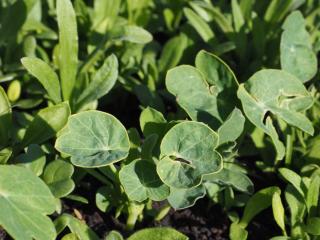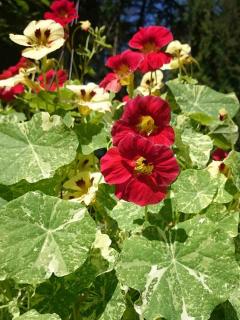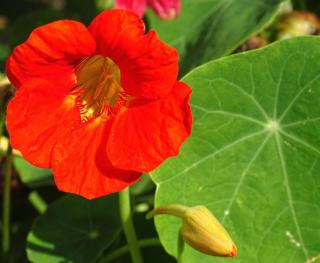

Nasturtium is a cute annual climbing vine that will gleefully decorate your garden.
Key Nasturtium facts
Name – Tropaelum majus
Family – Tropaeolaceae
Type – annual
Height – 12 to 16 inches (30 to 40 cm) up to 13 feet (4 meters) for those climbing
Exposure – full sun
Soil – normal
Flowering: summer → early fall – Care: none – Special feature: random yellow, orange, red blooms
Nasturtium will climb along hedges, fences, pergolas and low walls and cover them with orange and yellow flowers. Easy to care for and to grow, it can bear all kinds of soils and climates.

Also, don’t restrict yourself to a single color, your flower bed will be much more beautiful if you blend different colors together.
They’ll quickly cross-pollinate with other plants in the area anyways, so it’s difficult to keep a color or variety true to seed for this species.
It is a good idea to sow the seeds in place after the last frost spells during the month of May. You can also start sowing in a sheltered place as soon as March.

There are quite a few different varieties, they differ by flower color, leaf color (like the variegated nasturtium shown above/right), and climbing or trailing habit.
Native to North America, its brightly colored flowers will enliven the edges of your garden, and they will also highlight the shrubs you’ll be planting them under.

Some varieties like tuber nasturtium also have edible roots.
It’s both sweet and distinctly pepper-flavored. For example, you can pair them with arugula salad… delicious!